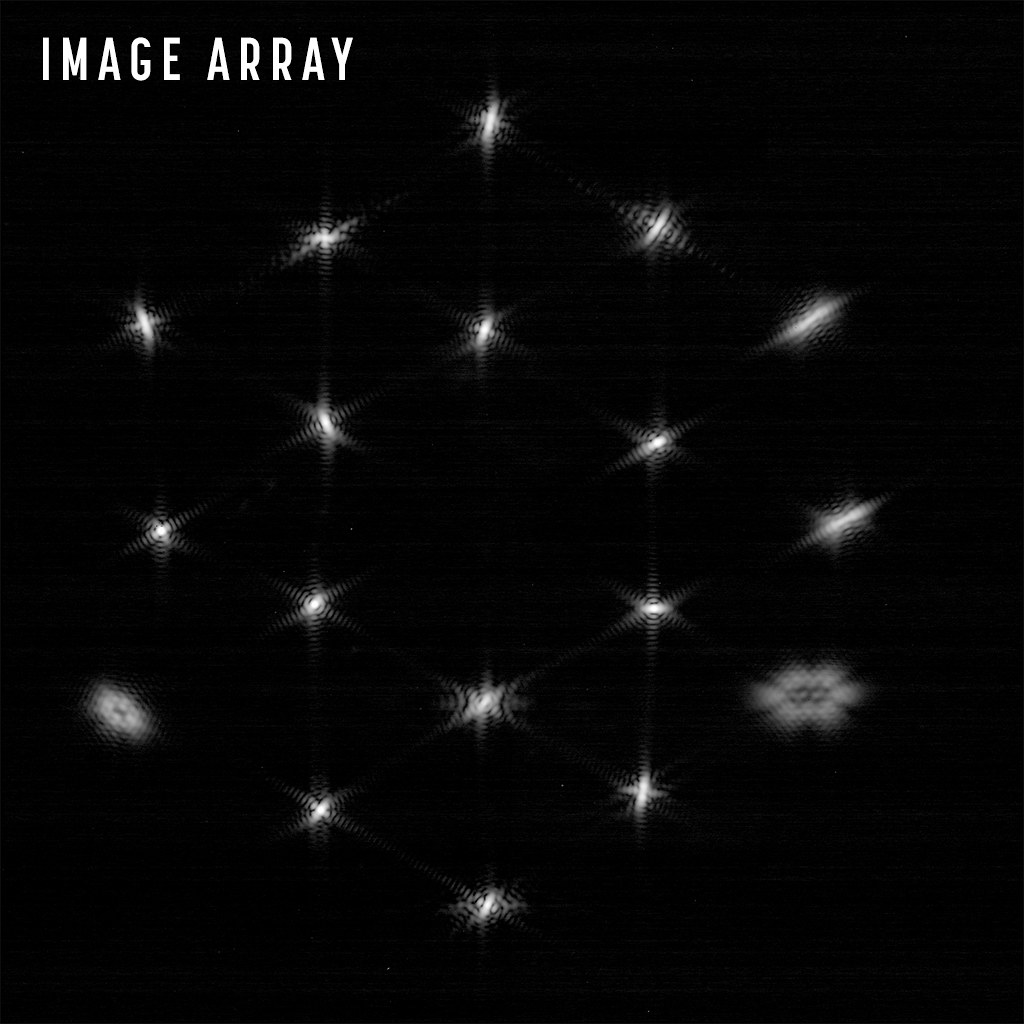Primary Mirror "selfie" - This “selfie” taken by Webb of its primary mirror was not captured by an externally mounted engineering camera, but with a special lens within its Near Infrared Camera (NIRCam). This special lens is meant for engineering, not science, and allows NIRCam to capture an “inward-looking” image of the primary mirror. This image helps us to check that the telescope is aligned with the science instruments. What you are seeing in this image is the actual primary mirror of Webb as it observes its engineering target, a bright star. All the mirror segments are seeing starlight, but the bright segment is bright because, from NIRCam’s view, the segment is directly aligned with the star. Read more about this image and the other engineering images captured by Webb on our blog. Credit: NASA/STScI
NIRCam Alignment Selfie - This “selfie” was created using a specialized pupil imaging lens inside of the NIRCam instrument that was designed to take images of the primary mirror segments instead of images of the sky. This configuration is not used during scientific operations and is used strictly for engineering and alignment purposes. In this image, all of Webb’s 18 primary mirror segments are shown collecting light from the same star in unison. Read more... Credit: NASA/STScI
Initial Alignment Mosaic and Annotated Initial Alignment Mosaic - This image mosaic was created by pointing the telescope at a bright, isolated star in the constellation Ursa Major known as HD 84406. This star was chosen specifically because it is easily identifiable and not crowded by other stars of similar brightness, which helps to reduce background confusion. Each dot within the mosaic corresponds to a primary mirror segment. These initial results closely match expectations and simulations. The annotated image identified which mirror segment corresponds to which dot. Read more... Credit: NASA
Alignment Image Array and Labeled Alignment Image Array - This early Webb Telescope alignment image, with dots of starlight arranged in a pattern similar to the honeycomb shape of the primary mirror, is called an “image array.” Read more... Credit: NASA/STScI/J. DePasquale
Post-Global Alignment Image - This hexagonal image array captured by the NIRCam instrument shows the progress made during the Segment Alignment phase, further aligning Webb’s 18 primary mirror segments and secondary mirror using precise movements commanded from the ground. Read more... Credit: NASA/STScI
Post-Image Stacking image - During this phase of alignment known as Image Stacking, individual segment images are moved so they fall precisely at the center of the field to produce one unified image instead of 18. In this image, all 18 segments are on top of each other. After future alignment steps, the image will be even sharper. Read more... Credit: NASA/STScI
Telescope Alignment Evaluation Image - While the purpose of this image was to focus on the bright star at the center for alignment evaluation, Webb's optics and NIRCam are so sensitive that the galaxies and stars seen in the background show up. At this stage of Webb’s mirror alignment, known as “fine phasing,” each of the primary mirror segments have been adjusted to produce one unified image of the same star using only the NIRCam instrument. This image of the star, which is called 2MASS J17554042+6551277, uses a red filter to optimize visual contrast. Read more... Credit: NASA/STScI









No comments:
Post a Comment